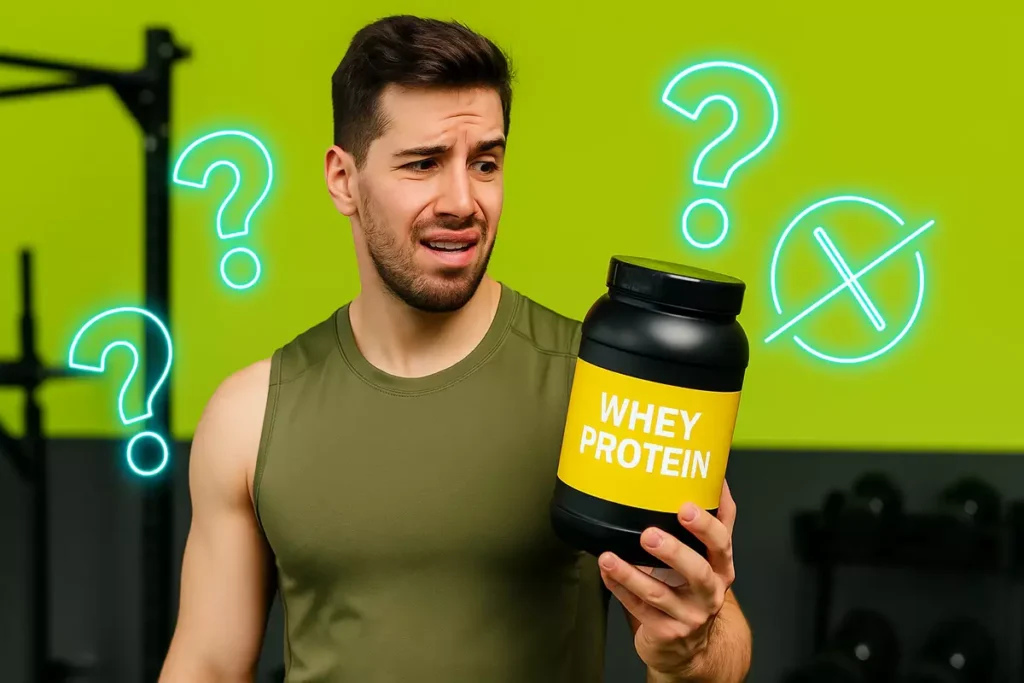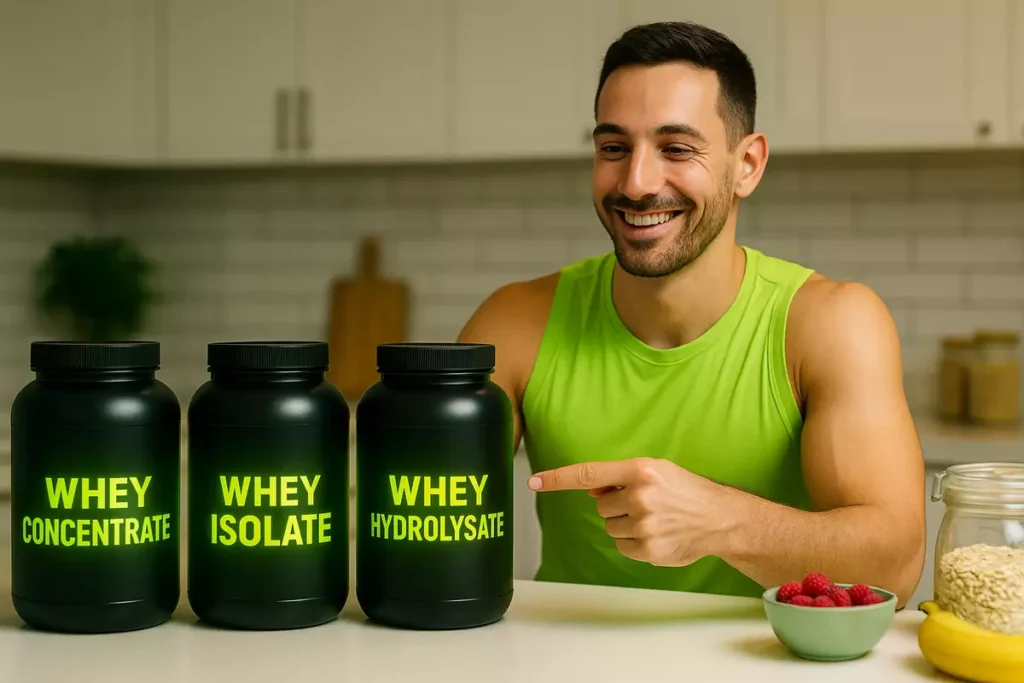Whey protein is everywhere — in gyms, kitchens, and health stores. But with popularity comes confusion.
Is it a muscle-building miracle, or just overhyped powder?
As a fitness trainer who’s used whey for over eight years, I’ve heard every myth and seen every result — good and bad.
Today, we’ll cut through the noise, bust the myths, and reveal the facts backed by science and real-life experience.
Table of contents
Is Whey Protein Really Good for You?
Yes — whey protein is one of the most researched, effective, and safe supplements for most healthy people.
It’s not just for bodybuilders; it can support muscle growth, recovery, and even weight management.
I’ve personally used whey protein for over eight years, almost daily, and it’s been a game-changer in my own training and for many of my clients. If you’re new to it, check my beginner’s whey protein guide for a smooth start.
Common Myths About Whey Protein

Myth 1: Whey protein damages your kidneys
For healthy individuals, there’s no scientific evidence to support this claim.
I’ve had regular blood tests over the years, and my kidney function has always been normal. The problem only arises if someone already has a kidney condition — in that case, protein intake should be guided by a doctor.
Myth 2: Whey is only for bodybuilders
Not true. I’ve worked with clients from all walks of life — from college students to busy parents — who use whey to meet their protein needs.
For example, Sara from the UK used whey protein while losing 9 kg in four months, simply by replacing one high-calorie snack with a whey shake. Her progress was steady, much like what I’ve seen in people during their first month of whey protein use.
Myth 3: Whey makes you bulky
Muscle gain requires both resistance training and a calorie surplus.
Whey protein alone won’t make you “bulky.” In fact, many people use it to stay lean while supporting muscle tone.
Myth 4: Plant protein is always better than whey
Both can be good options, but whey is a complete protein with high bioavailability.
I recommend plant protein for clients who are vegan or lactose-intolerant, but for most people, whey offers faster absorption and a strong amino acid profile.
Myth 5: You must take whey immediately after workouts
While the “anabolic window” is not as narrow as once believed, post-workout is still a great time to take whey for muscle repair.
But if you miss that window, don’t stress — hitting your total daily protein goal matters more. Learn the ideal whey protein dosage to make sure you’re getting enough each day.
Proven Facts About Whey Protein
- Complete Protein Source – Whey contains all nine essential amino acids, making it ideal for muscle repair and growth.
- Supports Recovery – After intense training, a 20–30g whey shake can speed up recovery.
Personally, I feel less sore and more ready for my next session when I use whey consistently.
- Helps with Weight Management – Whey is filling and can help reduce snacking.
Lucas from Brazil, one of my clients, used whey during a lean bulk and gained 4 kg of muscle without adding extra fat.
- Fast Digestion – Whey isolate in particular is quickly absorbed, perfect for post-workout nutrition. If you want to enjoy it more, try delicious whey protein mix ideas.
How to Choose the Right Whey Protein

- Types – Whey concentrate (budget-friendly, slightly higher in lactose), whey isolate (low lactose, higher protein percentage), and whey hydrolysate (pre-digested, fastest absorption).
- Quality Matters – I always check for brands with third-party testing and minimal fillers.
My own preference is a high-quality isolate because it’s easy to digest and ideal for clients sensitive to lactose.
If you’re unsure where to start, I’ve shared my complete guide on choosing the right whey protein.
Also, remember to check the shelf life after opening to keep it fresh and safe.
Best Practices for Using Whey Protein
- Dosage – 20–30g per serving is perfect for most people.
- Timing – Post-workout or between meals works best.
- Pair with Whole Foods – I often blend whey with banana, oats, and peanut butter for breakfast.
Sometimes, I mix it into Greek yogurt with berries for a high-protein dessert.
For younger clients, I also discuss the safety of whey protein for teenagers so they can supplement confidently.
Final Takeaway

Whey protein isn’t a magic powder, but it’s a powerful, convenient tool to help you hit your protein goals.
Ignore the myths — the facts and my own experience, plus years of research, show that whey is safe and effective for most healthy people.
Whether your goal is building muscle, improving recovery, or managing your weight, whey can fit into your lifestyle in a simple, delicious way.



Leave a Reply